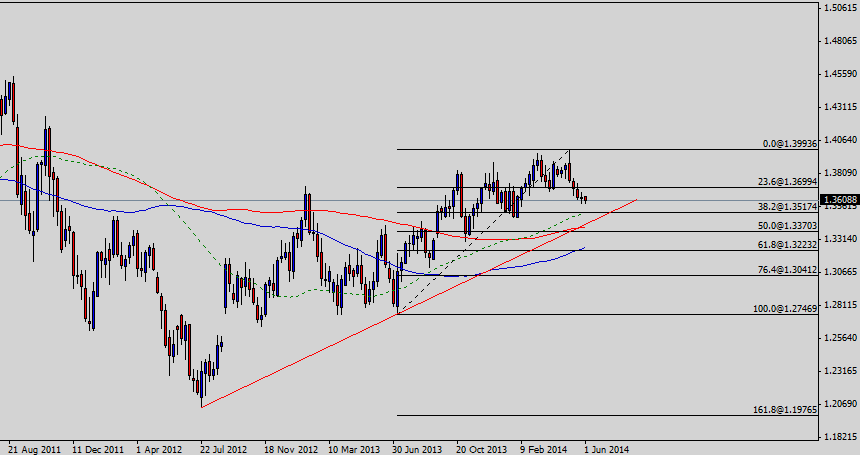FXOpen
The Euro extended downside movement against the US Dollar this week, dragging the EUR/USD to less than 1.3600 ahead of the European Central Bank (ECB) monetary policy announcement in which the policymakers are expected to announce some unconventional policy instruments. The sentiment remains bearish due to Lower Low (LL) in the recent wave.
Technical Analysis
As of this writing, the pair is being traded near 1.3610. A huge support may be noted around the trendline as demonstrated in the following chart. A break and daily closing below the trendline will trigger a renewed selling pressure, validating a deeper correction towards the old levels of 1.3000-3300, the ECB monetary policy outlook also favors this case.
On the upside, the pair is expected to face a hurdle near 1.3642, the 200 Simple Moving Average (SMA) ahead of 1.3700, the 23.6% fib level and psychological number.
Eurozone Inflation
Inflation in the Eurozone slumped surprisingly to 0.5% in May as compared to 0.7% in the same month of the year before, down beating the median projection of 0.7%. The poor inflation figure has spurred speculation that the ECB might announce Quantitative Easing (QE), another cut in the cash rate or negative deposit rate during the forthcoming monetary policy meeting which is scheduled later this month. The announcement of any unconventional measure might trigger huge selling pressure in the Euro pairs, threatening the long term trendline support of the EUR/USD.
Conclusion
There could be two trade strategies for EUR/USD. If the ECB leaves the monetary policy unchanged then buying the pair around the current levels appears to be a good strategy. On the other hand, if we see some harsh policy action from the central bank then selling the pair on a daily closing below the trendline will be a good strategy.
Trade over 50 forex markets 24 hours a day with FXOpen. Take advantage of low commissions, deep liquidity, and spreads from 0.0 pips. Open your FXOpen account now or learn more about trading forex with FXOpen.
This article represents the opinion of the Companies operating under the FXOpen brand only. It is not to be construed as an offer, solicitation, or recommendation with respect to products and services provided by the Companies operating under the FXOpen brand, nor is it to be considered financial advice.






